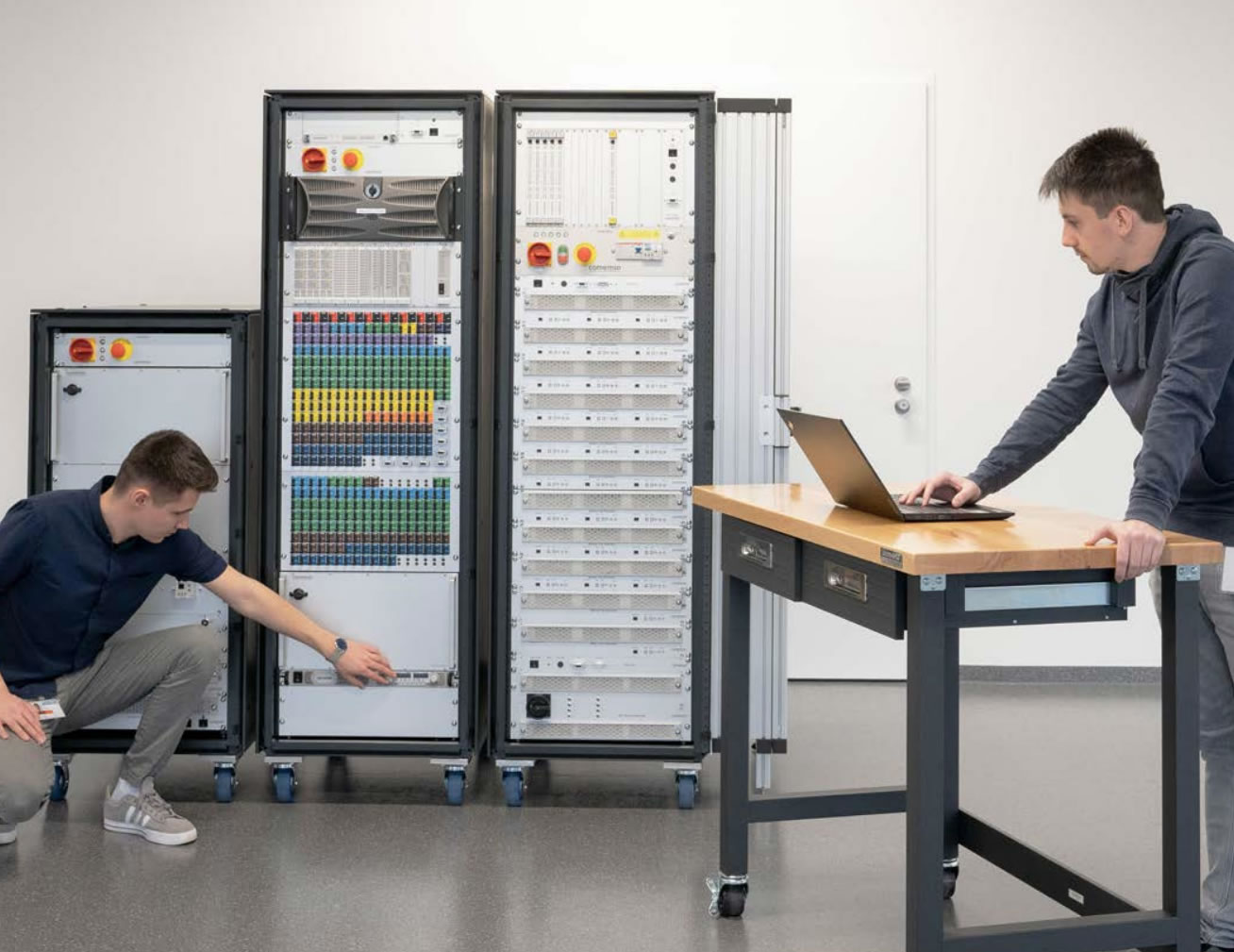Battery Cell Simulator
BATTERY CELLS NEED CONSTANT MONITORING
Electromobility is growing at a tremendous rate worldwide. For today’s mobile energy storage systems, that means they not only have to deliver high performance, they also need to ensure safe, reliable operation. Doing so requires constantly monitoring the voltage and temperature of every single battery cell. This is done with a special electronic monitoring system called the cell management controller (CMC).
Individual battery cells are combined into cell modules, and each cell module has its own CMC (Fig. 1). The cell management controller is an electronic component that has one or more microcontrollers and is specially designed for monitoring battery cells. The CMC is connected via measuring leads to the positive and negative poles of the cells so it can measure the voltage reliably. It is also connected to temperature sensors, which are indispensable for optimizing battery loads and efficiency.
BALANCE
Since the cell modules consist of multiple single cells connected in series, their internal resistance can vary greatly due to a wide range of factors such as variations in production quality or age-related fatigue. This can lead to different charging and discharging curves, resulting in critically deep discharge of the battery cells or, during charging, in the charge cut-off voltage being exceeded even though the overall voltage is still in the nominal range. Depending on the type of battery, this can lead to irreparable damage or even combustion of the battery modules! If deviating charge levels occur (Fig. 1), the charge levels of the individual battery cells can be adjusted to match each other with an equalizing system. This process is called balancing. The equalizing system involves an electronic circuit that is normally an integral part of any battery management system and controls the uniform charging of the individual battery cells in a cell module. It uses the voltage to determine the charging level, which is called state of charge (SoC). In addition, the temperature of each cell, which depends on the chemical process involved in charging and discharging, is measured.
THE CONTROL CENTER
The battery management system (BMS) includes the battery management unit (BMU) and all cell management controllers (Fig. 2). The BMU is the central control unit for battery modules such as those used to drive electric vehicles or all other kinds of energy storage systems. It acts as the “brain” where all of the information collected by the battery monitoring systems comes together. Using the battery cell voltages, it determines the current states of charge (SoC) and controls the overall communication between the battery and the vehicle. When necessary, it also gives the command to perform balancing so that the battery cells are not deep-discharged or overcharged as described above.
In battery-powered vehicles, it is supplied with voltage from the vehicle’s 12- or 24-volt electrical system, so it has no effect on the range when the vehicle is at rest. In contrast, the cell management controllers are generally supplied with electricity from the vehicle battery and thus cause slight charge losses. This makes it important, when developing a CMC, to ensure that its energy consumption is kept as low as possible and to implement a rest mode to minimize “self-discharging”.








